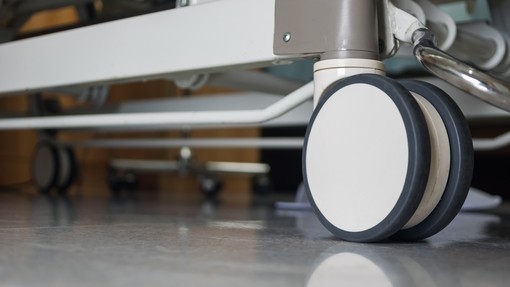Fundamental dishonesty: when can a defendant sidestep QOCS?

Details
Under Part 44.16 of the Civil Procedure Rules (CPR) the court has the power to strike out a claimant’s claim following a finding of fundamental dishonesty. The provision was introduced to address spurious personal injury claims being brought by claimants who would otherwise face no consequence for venturing a claim in which qualified one-way costs shifting (QOCS) applied.
An uncertain application
Aside from a short practice direction, there was no comprehensive guidance or definition of the term ‘fundamental dishonesty’. It is only now, almost four years since its introduction, that a body of case law is gradually clearing the muddy waters.
Dishonesty must be fundamental and not just collateral. In Meadows -v- La Tasca (2016) the claimant alleged that she had been injured in a slipping incident at the defendant’s restaurant. The district judge stated that he did not believe the claimant or her supporting witness’ account of events, describing their evidence as ‘riddled with inconsistencies’. He found the claim to be fundamentally dishonest and QOCS protection was removed.
On appeal, HHJ Hodge QC overturned the decision and ruled that the judge had erred in the exercise of his discretion, he did not consider that plain inconsistencies in the evidence should automatically equate to fundamental dishonesty.
In Diamanttek Ltd -v- Jonathon James (2016) the claimant brought a claim against his former employer alleging that he had not been provided with ear defenders despite working in a noisy environment between 2003 and 2013. The claim failed on the basis that Diamanttek were able to adduce evidence to show appropriate personal protective equipment (PPE) had been provided throughout his employment. The judge refused the defendant’s application to remove the claimant’s QOCS protection despite stating that the claimant had not been ‘telling the truth today’. On appeal, the defendant was successful. HHJ Gregory was satisfied that a finding of fundamental dishonesty could be made as the allegation that no PPE had been provided was the principle assertion behind the claim and was therefore fundamental to the case.
In Nesham -v- Sunrich Clothing Limited (2016) the claimant had been involved in a road traffic accident (RTA) and had failed to establish liability at trial. The defendant sought to rely on the provision of fundamental dishonesty despite not having pleaded it or raised it as an issue at any time prior to the final hearing. District Judge Charnock-Neal held that the claimant ‘gave me his version of events. I have preferred not to accept that version, but it does not necessarily follow that he was fundamentally dishonest’. This principle was subsequently reiterated by the Court of Appeal in Da Costa & Anor -v- Sargaco & Anor (2016).
It is now accepted that if a claimant is found to be exaggerating his/her symptoms to such an extent that it forms a significant part of his or her claim for damages, a finding of fundamental dishonesty can be made. The claimant in Gosling -v- (1) Halio (2) Screwfix Direct (2014) brought a claim after sustaining an injury to his knee when falling through the rung of a ladder (designed by the first defendant and supplied to the claimant by the second defendant). It was claimed that the incident was caused due to the deficient construction of the ladder. The claim included special damages of £39,000 of which £17,000 was for future care. The defendant obtained surveillance which showed the claimant to be mobile without the use of a crutch – only to get the crutch out of the back of his van prior to attending an examination with the defendant’s expert.
HHJ Moloney QC held that the claimant’s dishonesty was fundamental as it related to a ‘very substantial element of his claim’ and rejected the claimant’s argument that fundamental dishonesty could only be found where ‘the dishonesty went to the root either of liability as a whole or damages in their entirety’.
An application under Section 57 of the Criminal Justice and Courts Act 2015 (CJCA)
Under CPR 44.16 it was felt that the court had been reluctant to strike out the entirety of a claimant’s claim. Case law suggested that the court was likely to view a collateral lie as immoral rather than punishable.
In Summers -v- Fairclough (2012) the claimant was awarded £88,716 against a pleaded schedule of £800,000 after surveillance footage had shown that he was grossly exaggerating his injuries. However, the Supreme Court refused the defendant’s application to strike out the entirety of the claim. Lord Clarke saying that ‘the draconian step of striking a claimant is always a last resort… it is very difficult indeed to think of circumstances in which such a conclusion would be proportionate’. The claimant was allowed to benefit from the genuine part of his claim.
The decision in Summers was viewed as a catalyst for the introduction of the CJCA. Section 57 provides that where a court makes a finding of fundamental dishonesty, dismissal of the claim is mandatory unless the court is satisfied that the claimant would suffer ‘substantial injustice’ (another term with no definition!) as a result. The CJCA only applies to claims issued on or after 13 April 2015 and can only be relied on once liability is not in issue.
The first claim in which Section 57 was successfully applied was in Hughes (1) Kindon (2) and Jones (3) -v- KGM (2016) – the claimants having significantly exaggerated their symptoms following an RTA. DDJ Eaton-Hart, on appeal, commented that two claimants had ‘presented a deliberate inaccurate position to the medical expert for financial gain’.
Section 57 would appear better aimed at genuine claims where there has been exaggeration and CPR 44.16 is targeted at wholly false claims.
When should it be pleaded?
It is preferable for the defendant to state his claim from the beginning; this is likely to be looked upon more favourably by the judiciary. However, the reality is that inconsistencies in the evidence often do not materialise until much later down the litigation road or even until the claimant is stood in the witness box.
There are still, surprisingly, a low number of senior court decisions and no definitive legal test exists. Exactly what conduct will deprive the claimant of costs protection and the extent of exaggeration required on the claimant’s part is difficult to determine - although this would appear to be by design.
The current state of play is that courts will be reluctant to remove QOCS protection and it is likely to be very difficult to prove fundamental dishonesty without clear and unequivocal evidence in the form of surveillance or glaring inconsistencies in the claimant’s evidence coming out at trial.






